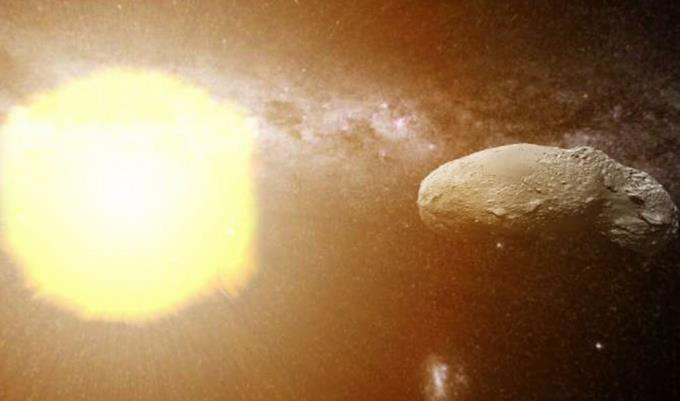An international team of researchers led by the University of Glasgow has revealed that the Sun is a “surprising” source of water found on Earth.
They report in Nature Astronomy that the solar wind, made up of charged particles from the sun and composed mostly of hydrogen ions, created water on the surface of dust grains carried by asteroids that hit Earth early in the solar system.
The Director of the Space Science and Technology Center (SSTC) at Curtin University in Australia, Professor Phil Bland, explains that Earth was very rich in water compared to other rocky planets in the solar system, with oceans covering more than 70 percent of the Earth’s surface. superficiality, and that scientists have long wondered about the exact origin of all this.
One current theory is that water was transported to Earth in the final stages of its formation in Type C asteroids, but previous tests of these asteroids’ “fingerprint” have found that, on average, they are no match for water. Earth, which means there was at least one other unaccounted source,” Professor Bland adds. Our research suggests that the solar wind created water on the surface of small dust grains and that this relatively lighter water likely provided the rest of Earth’s water.”
“This new theory of the solar wind is based on the careful analysis, atom by atom, of small fragments from a near-Earth type S asteroid known as Itokawa, sampled by the Japanese space probe Hayabusa and returned to Earth in 2010.”
The researcher notes that Curtin University’s atomic probe tomography system allowed “an incredibly detailed look at the first 50 nanometers or so of the surface of the Itokawa dust grains, which we found contained enough water that, if expanded, would be equivalent to about 20 liters per cubic meter of rock.
Dr Luke Daly, a Curtin graduate and currently at the University of Glasgow, adds that the research not only provides scientists with insight into where water came from on Earth in the past, but could also help with future space missions.
He explains, “One barrier to future space exploration is how astronauts can get enough water without having to carry supplies. Our research shows that the same process of space weathering that created water in Itokawa may have occurred on other planets devoid of water. air, which means astronauts may be able to manipulate a fresh water supply directly from dust on the surface of a planet, such as the Moon.”
The research was funded by the Scientific and Technological Facilities Council (part of UKRI), and was carried out by researchers from the University of Glasgow, Curtin University, University of Sydney, Oxford, University of Hawaii at Manoa, Museum. Natural History, Idaho National Laboratory, Lockheed Martin, Sandia National Laboratories, NASA Johnson Space Center, University of Virginia, Northern Arizona University, and Purdue University.

“Wannabe internet buff. Future teen idol. Hardcore zombie guru. Gamer. Avid creator. Entrepreneur. Bacon ninja.”




